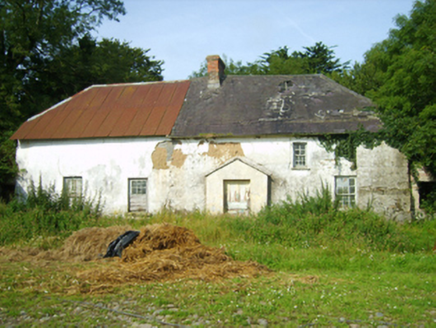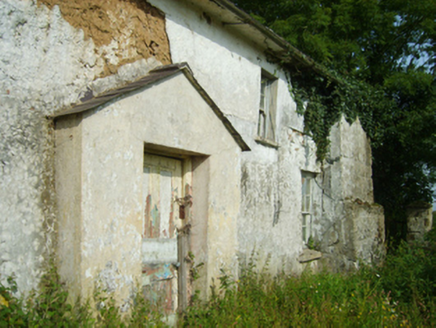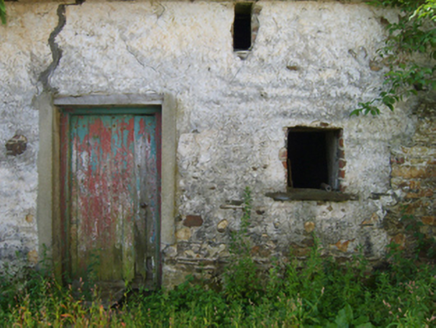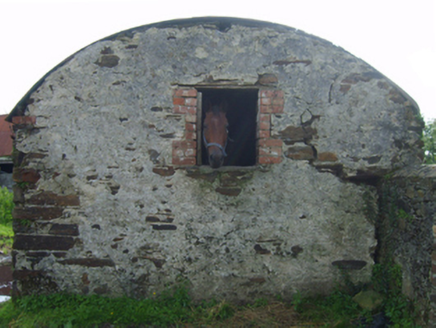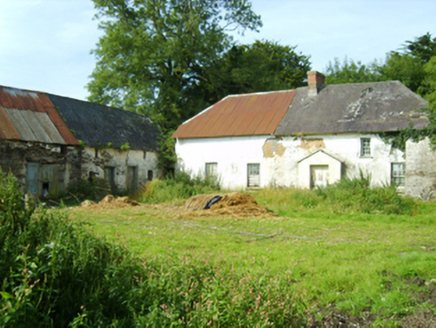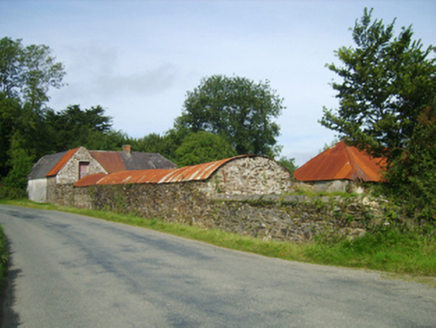Survey Data
Reg No
15703246
Rating
Regional
Categories of Special Interest
Architectural, Social
Original Use
Farm house
Date
1700 - 1840
Coordinates
301102, 130936
Date Recorded
23/08/2007
Date Updated
--/--/--
Description
Detached four-bay single-storey lobby entry farmhouse with half-dormer attic, extant 1840, on a T-shaped plan off-centred on single-bay single-storey gabled windbreak. Now disused. Hipped corrugated-iron (south) or slate (north) roof with pressed iron ridges (south) or clay ridge tiles (north), red brick Running bond central chimney stack having corbelled stepped capping, and cast-iron rainwater goods on limewashed rendered slate flagged eaves retaining cast-iron downpipes. Part creeper- or ivy-covered limewashed lime rendered battered walls with mass concrete stepped buttress (north). Square-headed off-central door opening with overgrown threshold, and concealed dressings framing timber panelled door. Square-headed window openings with concrete or rendered sills, and concealed dressings including timber lintels framing six-over-six timber sash windows having part exposed sash boxes. Set in unkempt courtyard perpendicular to road with piers to perimeter having shallow pyramidal capping supporting flat iron double gates.
Appraisal
A farmhouse identified as an integral component of the vernacular heritage of County Wexford by such attributes as the alignment perpendicular to the road; the rectilinear lobby entry plan form off-centred on a characteristic windbreak; the construction in unrefined local materials displaying a battered silhouette with a failing surface finish revealing sections of "daub" or mud; the disproportionate bias of solid to void in the massing; and the high pitched roof originally showing a thatch finish according to an entry in the "House and Building Return" Form of the National Census (NA 1901; NA 1911). A prolonged period of unoccupancy notwithstanding, the elementary form and massing survive intact together with substantial quantitiers of the historic or original fabric, thus upholding much of the character or integrity of the composition. Furthermore, adjacent "tin roofed" outbuildings (extant 1840) continue to contribute positively to the group and setting values of a neat self-contained ensemble making a picturesque, if increasingly forlorn visual statement in a sylvan street scene.

